Fractals are the source of some of my favorite mathematically based imagery. I'm always surprised by the amount of complexity generated from simple mathematical formulas and algorithms. I have written several programs to render the Mandelbrot and Buddhabrot fractals and their variants, as well as simple renderers for 3D ray-marched fractals such as the Mandelbox and Mandelbulb fractals.
Fractal Images

Still image of my favorite section of the Buddhabrot set. A vast number of the orbits fall into the bright curved line, so to make this amount detail visible, a very steep brightness curve has to be chosen.
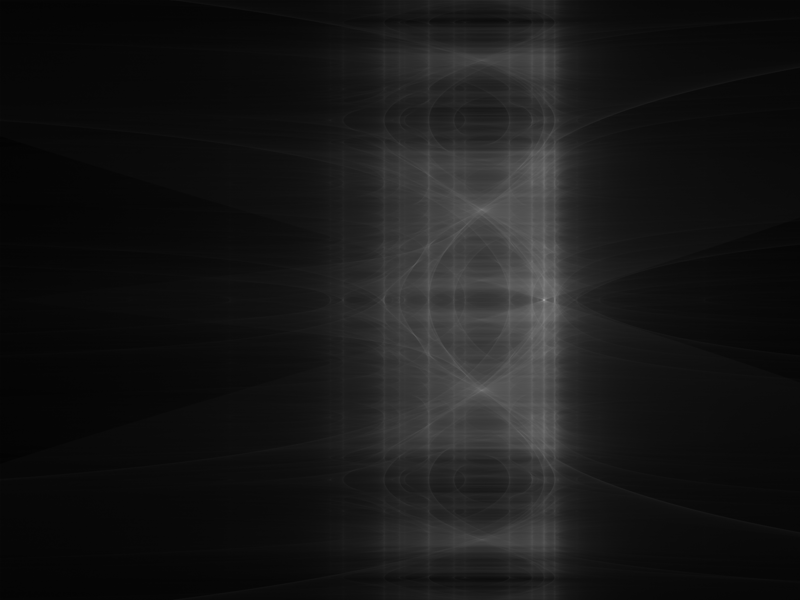
Another region of the Buddhabrot. The layers and structure of the fractal are fascinating.

The Buddhabrot fractal. The general parameters for rendering this image were taken from Melinda Green's webpage.
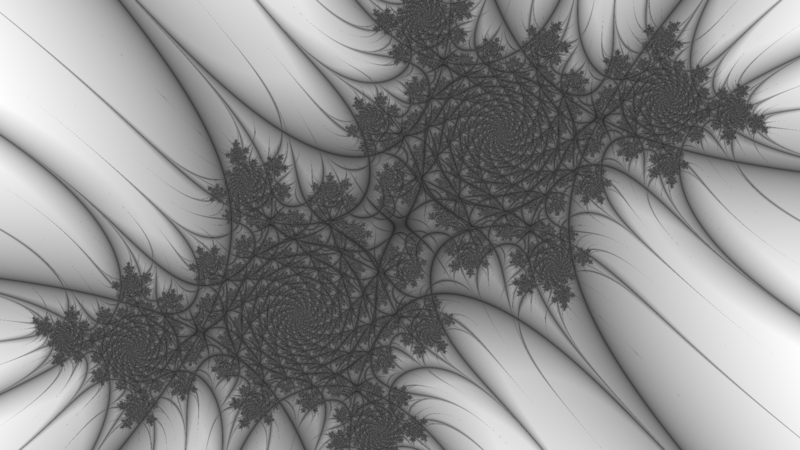
Rendering of simple linear traps for a Julia set.
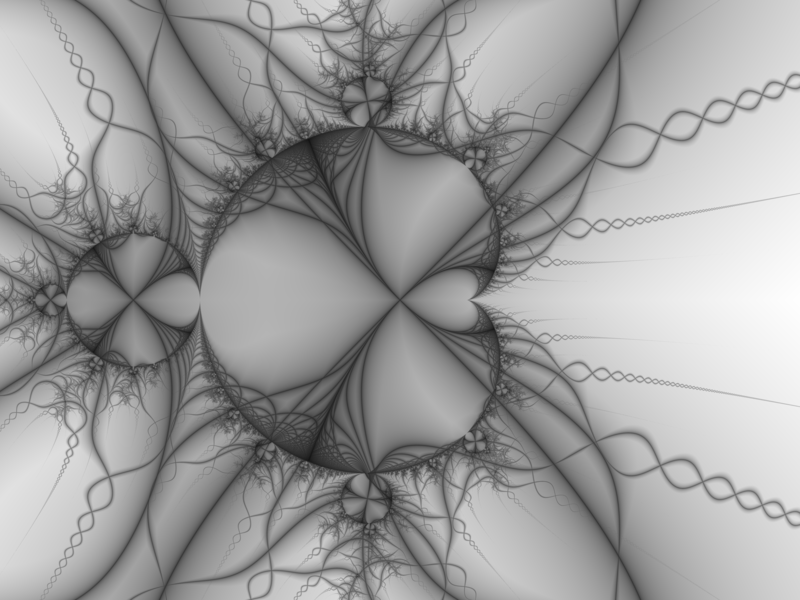
Rendering of simple linear traps with some added sine wave modulation for a Mandelbrot set to make wavy criss-crossing structures.

A rendering of a Mandelbrot-like fractal with a different equation.
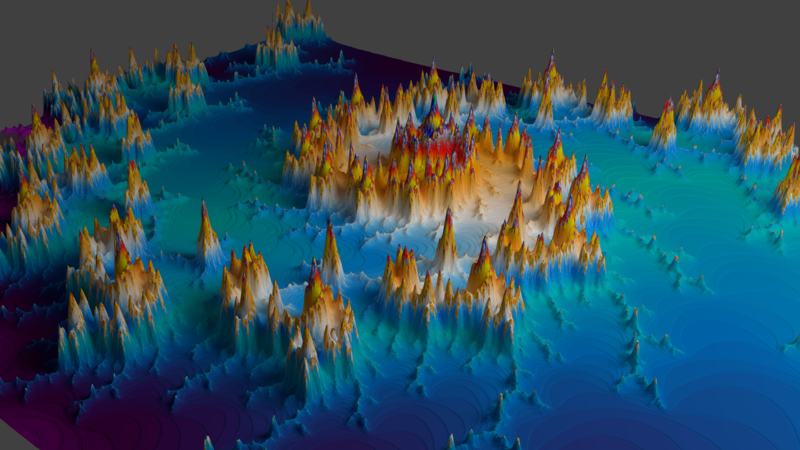
This image was first rendered using the ChaosPro program, then imported into Blender and rendered with the Cycles renderer.
Fractal Videos
Self portrait made for a school art class. I wrote several Processing 3 scripts to do Canny edge detection on a photograph of myself and use the result to render the orbit traps of the image in a Mandelbrot fractal. Sound is created from the image itself; a frequency spectrum is extracted from every vertical image line and averaged across the entire frame to create the sound.
Video of one of my favorite regions in the mutant Buddhabrot fractal. The video is created by moving along one of the axes of the Buddhabrot. Every image is just a two-dimensional slice of a much larger, hyperdimensional fractal!
NPR Images
These images are generated by taking an input picture (usually a photograph of some sort) and applying a complex filter to the entire image. This process is called non photorealistic rendering (npr).

A non photorealistic rendering (npr) method I devised myself. From top to bottom, a preset number of directions is probed from each pixel. A line is rendered if it can be drawn in one color without crossing a certain color difference threshold.

Another non photorealistic rendering (npr) method. The input image is recursively converted into a quadtree-like structure based on how much the colors inside a quadrant vary. Image is of Ardvreck castle in Scotland, photographed by my dad.
IQOQI Internship
In summer 2017, I had an internship at the Institute for Quantum Optics and Quantum Information (IQOQI). My main goal was to set up an experiment for a vacuum cell to measure the photoionization of calcium. As a summary of the project, I wrote a short thesis.
I had some extra time at the Internship, which I used to measure the optical beat of an optical fiber. A laser beam is sent through a short optical fiber and then overlapped with itsself so that a beat signal can be measured with an oscilloscope. For this video, I converted the oscilloscope data into an audio stream, which makes the beat of the fiber audible.
Sulfurous Scratch Player
In an internship at the Lakeside Park in Klagenfurt, I programmed Sulfurous, a modification of Phosphorus Scratch player. Scratch is a graphical programming language intended for teaching programming -- but it's based on the old Flash platform and is slow. The Phosphorus player uses JavaScript to speed up Scratch projects. Sulfurous aims to improve the Phosphorus player even further by fixing numerous bugs and implementing modern HTML5 WebGL rendering. Several people worked on this project. My own contribution was to rewrite the graphics output to use WebGL and drastically increase rendering performance. Below are two small projects of my own running in the player.
Analog Modular Synthesizer
In 2016, I began building a do-it-yourself (DIY) analog modular synthesizer with my dad. The synthesizer can be heard in action in the following videos. For my VWA (Vorwissenschaftliche Arbeit, literal translation is "Pre-scientific paper"), a mandatory task in the Austrian matura, I decided to write about the various acoustic instruments that can be simulated with this synthesizer. A PDF of this work can be found here. (Note: This is version corrects some minor mistakes of the original, handed-in version)
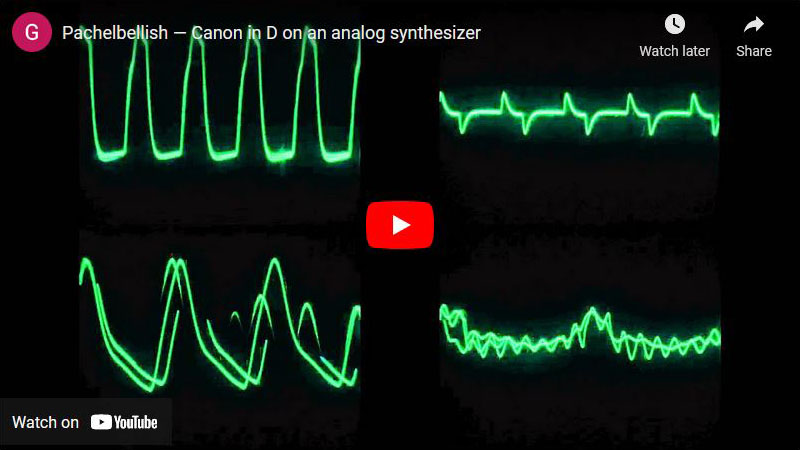
Youtube: Pachelbellish - Canon in D on an analog synthesizer

Youtube: Glassworks Synthesizer
Here's a recording of Bach's famous organ piece, the Toccata in D-minor. This was a simple test to see if MIDI playback would synchronize correctly over multiple tracks, in this case 15. For this purpose I also wrote a python script to split midi into monophonic tracks for use with the synthesizer. I used 4 Oscillators at once to create a thick, layered sound with lots of chorus. Sounds impressive on good speakers! Sadly I'm not aware who the author of the midi file is, or I would give them credit for their impressive work. I got the file from bachcentral.com.
I've also started working on some chamber music incorporating the classical guitar and synthesizer. Here I've recorded "Lesson For Two Lutes", a duet by an anonymous composer. The Guitar part swaps places with the synthesizer part halfway through. I sent the guitar sound through a phase-shifter and spring reverb unit to make it sound more funky.
Quadcopter
In 2013, I built a do-it-yourself (DIY) quadcopter with my dad. I learned a lot during the building process which involved soldering and connecting the various parts correctly. Flying the quadcopter was a very interesting and educational experience, especially when specific camera angles and shots were desired.
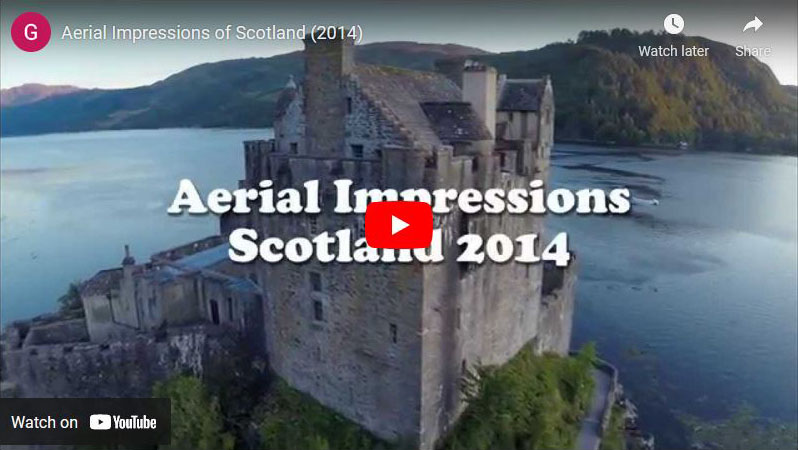
Youtube: Aerial Impressions Scotland 2014
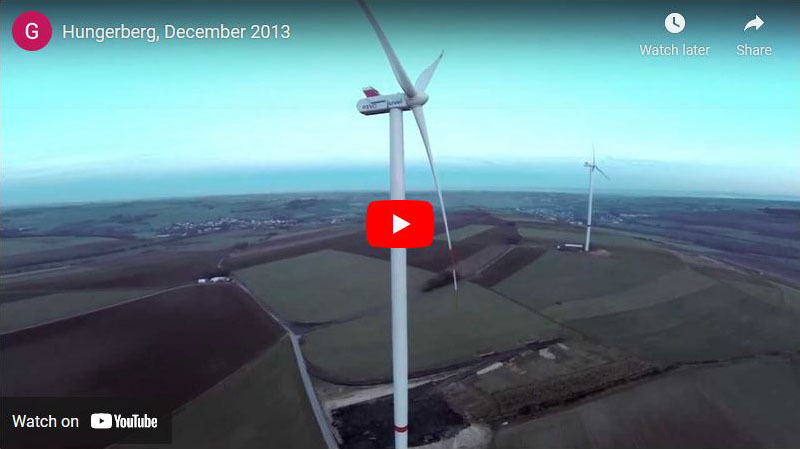
Youtube: Hungerberg, December 2013
Origami
I enjoy folding modular origami. The pieces below were folded by myself, using instructions by other artists.

